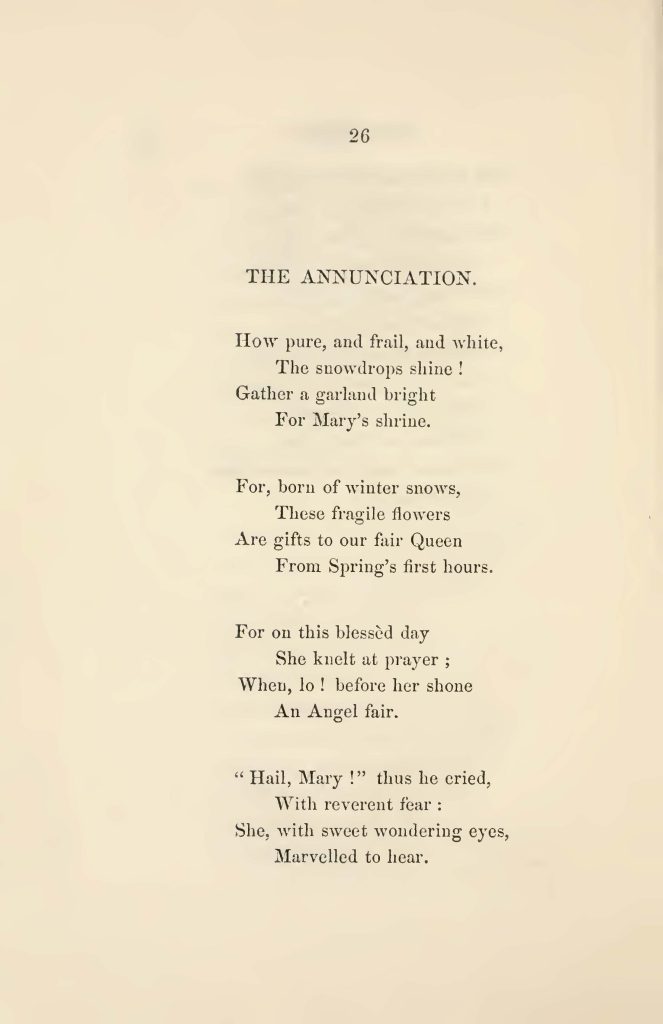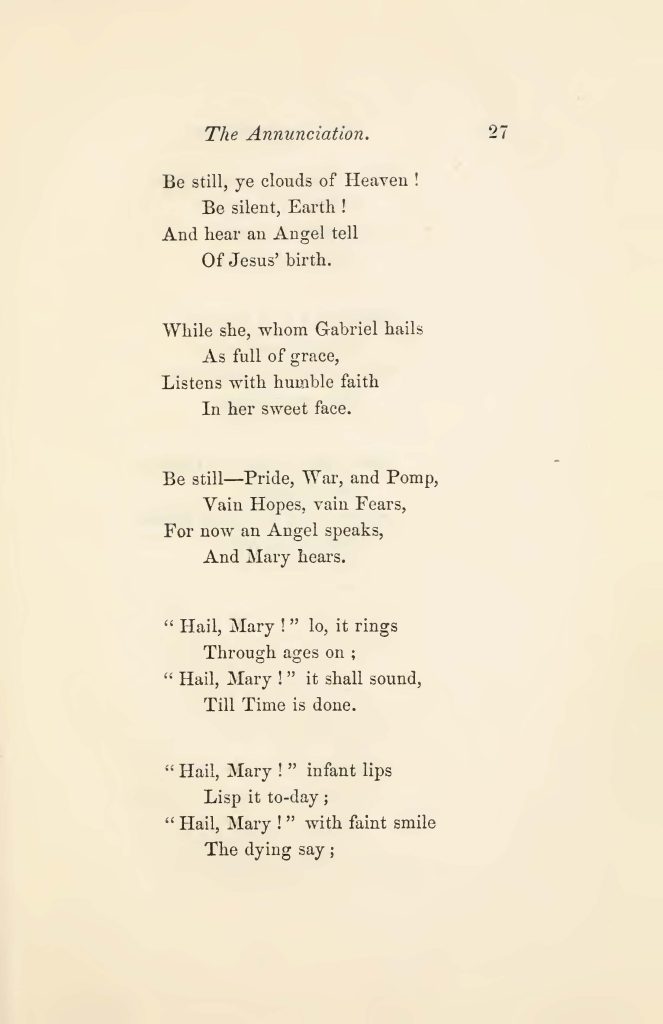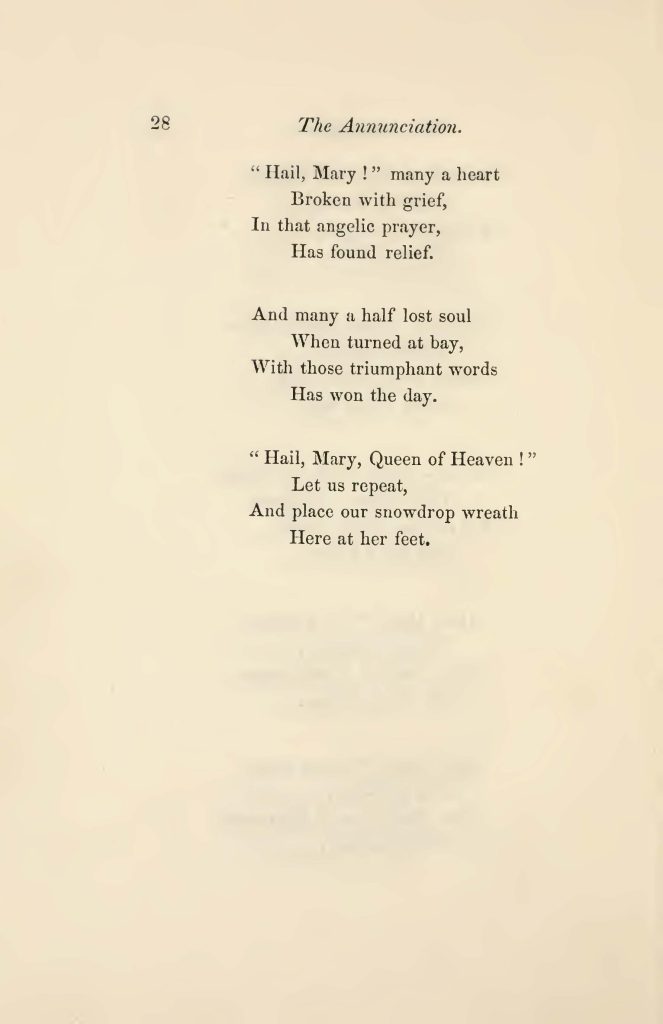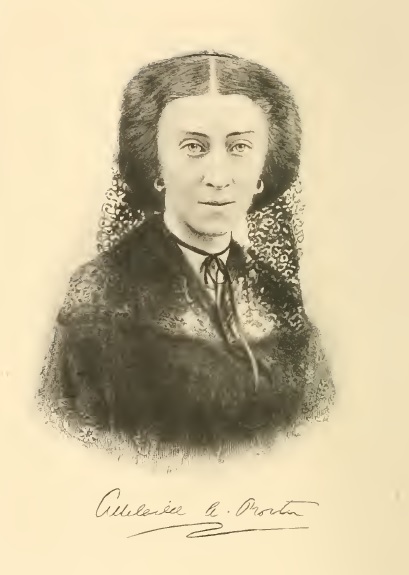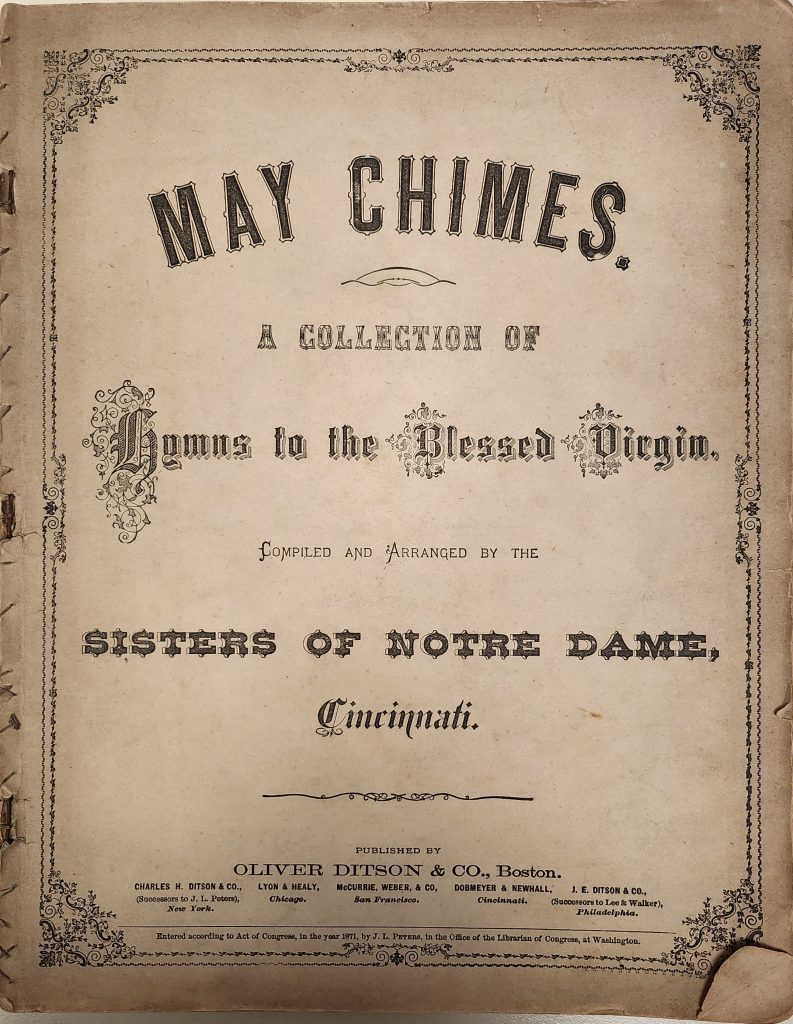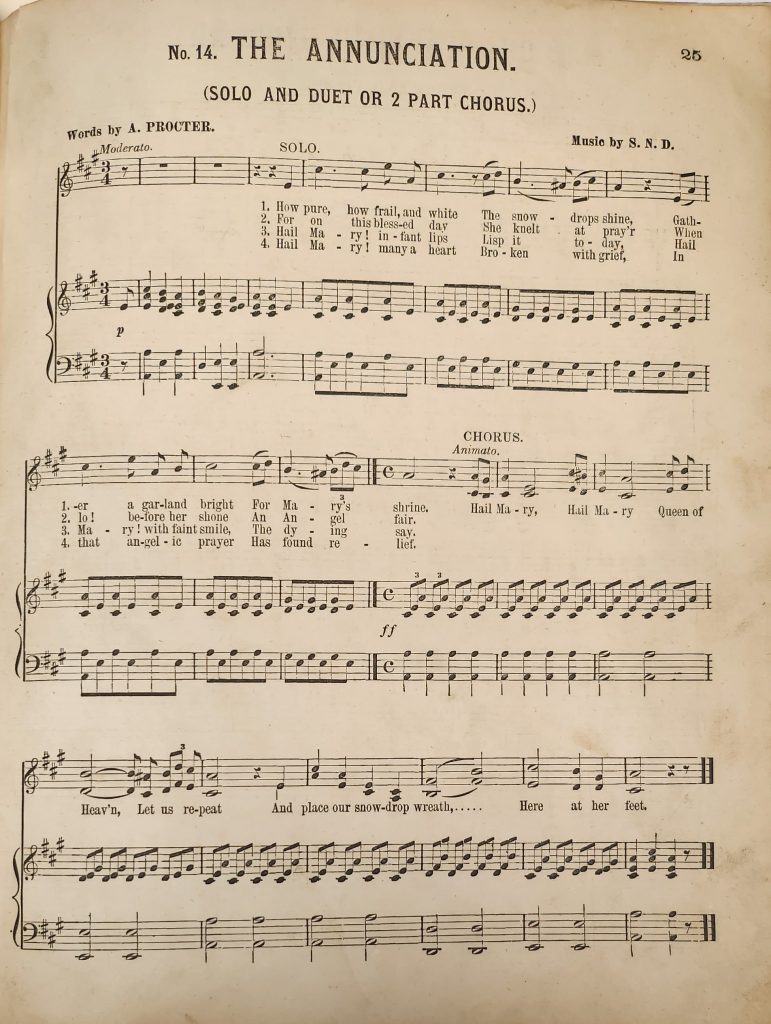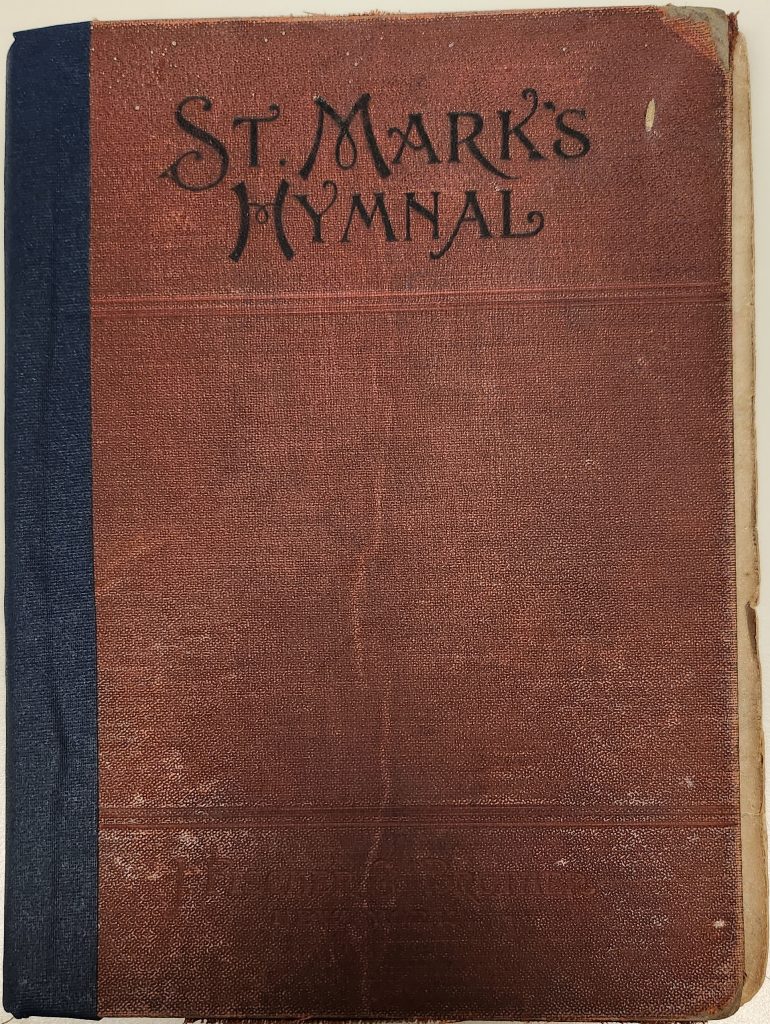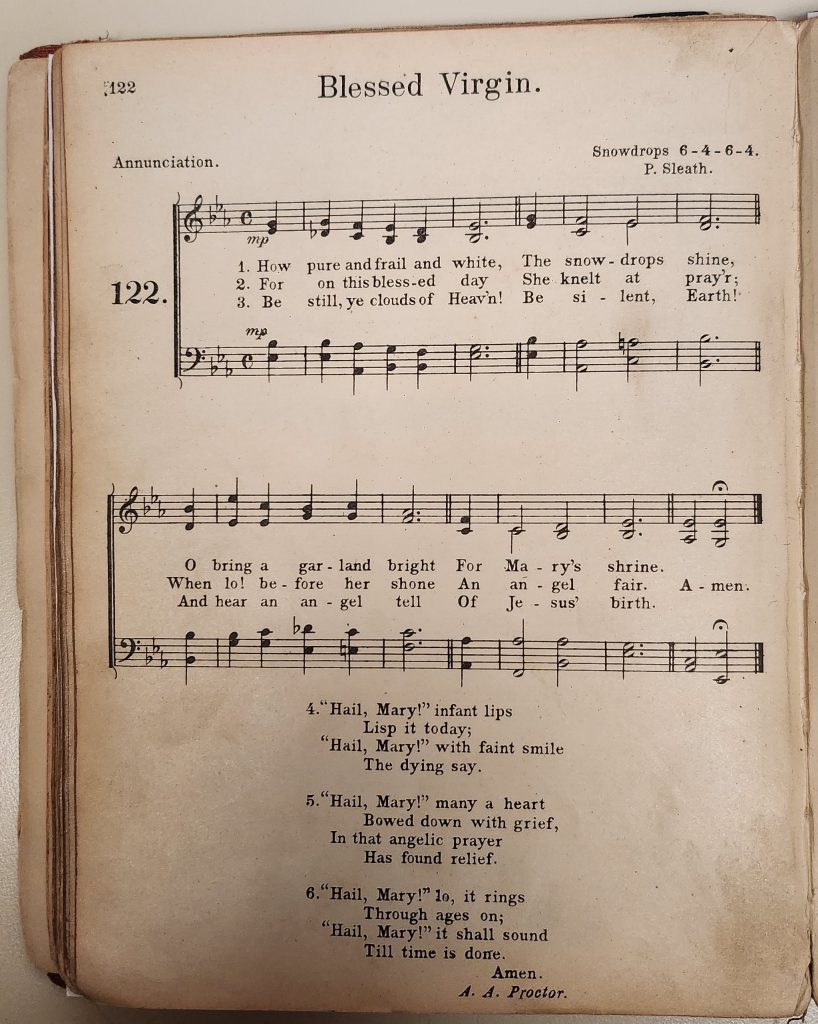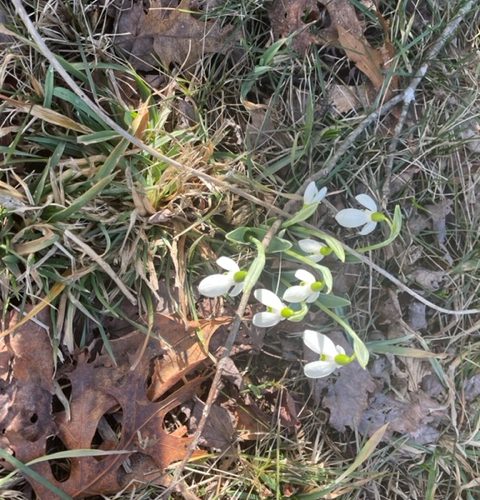Adelaide Anne Procter (1825-1863) was the author of this hymn. The verses of this hymn first appeared in her book of poems, A CHAPLET OF VERSES published in 1862, in London for the benefit of the Providence Row Night Refuge for Homeless Women and Children, located at the back of 14, Finsbury Square and a narrow street called Providence Row (now Worship Street). This was the first Catholic refuge in England or Ireland and was open to both Catholics and Protestants.
The refuge was founded by a Catholic priest, Rev. Dr. Gilbert in 1860, and the Sisters of Mercy saw to the needs and comfort of the homeless which opened from October to April. More than 14,000 lodgings had been given by the time A CHAPELT OF VERSES was published. A footnote in the table of contents reads, that some of these poems were written twenty years ago, but only three of them have been previously published.
Adelaide was born in 1825 and was a prolific poetess, philanthropist, and a soul of good charity. She labored extensively helping the homeless and unemployed women of 19th century England. Her first poem submitted under the pseudonym of Mary Berwick, was published in a weekly journal Household Words whose principal editor and publisher was Charles Dickens. Later, Charles Dickens learned that Mary Berwick was none other than the eldest daughter of his close friend Byran Waller Procter better known as Barry Cornwall.
Adelaide joined the Catholic church 1851, her journey to Catholicism and the poverty of the poor that she saw around her heavily influenced her poetry. She was a highly educated woman for her time – fluent in German, French and Italian. It is said that she was Queen Victoria’s favorite poet. In 1862, because of her tireless work on behalf of suffering women and children she contracted tuberculosis. She struggled against this illness for 15 months and died at the young age of thirty-eight.
Her poems were extensively read throughout England and America and appeared in various publications and Catholic magazines including the AVE MARIA. Three collections of her poems were published: Legends and Lyrics, The Poems of Adelaide A. Procter, and A Chaplet of Verses. Many of her poems were composed into songs and several into hymns that appeared in both Catholic and Protestant hymn books including:
- Ave Maria Bright and Pure (Ora Pro Me)
- How Pure, How Frail, and White (The Annunciation)
- I do not ask, Oh Lord (Per Pacem Ad Lucem)
- My God, I Thank Thee (Thankfulness)
- Seated one day at the Organ (A Lost Chord)
- The Shadows of the Evening Hours (Evening Hymn)
- Thro’ the world thy children raise (The Names of Our Lady)
This brief write-up is but a small tribute of the life of Adelaide Procter. A comprehensive biography on the life of Adelaide Procter can be found at the website Minor Victorian Poets and Authors.
The hymn How Pure, How Frail, and White first appeared in the Catholic hymnal MAY CHIMES and was published the Oliver Ditson Co., in 1871. This is a collection of hymns to the Blessed Virgin Mary compiled and arranged by the Sisters of Notre Dame de Namur of Cincinnati, Ohio and captioned The Annunciation.
It also appeared in the following Catholic hymnals: MAY BLOSSOMS, 1872; PETERS’ SODALITY HYMNBOOK, 1872; LAUDIS CORONA, 1880 and 1885; MANUAL OF SELECT CATHOLIC HYMNS, 1885 & 1925; ST. BASIL’S HYMNAL from 1888 thru 1918; ST. MARK’S HYMNAL, 1910; St. JOSEPH’S HYMNAL, 1930 and HYMNS USED BY THE PUPILS OF THE SISTERS OF NOTRE DAME, 1921 & 1948.
The Melodies
Two melodies have been found for this hymn. The first was composed by a Sister of Notre Dame. It was a customary practice in many religious communities not to give credit to individuals but to the whole community. In some rare cases authorship has been known in a verbal tradition and meticulously reconstructed by hymn researchers for example:
- Sister Mary Xavier or sometimes S.M.X. (Sybil F. Partridge) and one of her most famous hymns Just for To-day.
- Sister Mary of St. Philip (Frances (Fanny) Mary Lescher) and her translation of Venez, divin Messie which gave us O Come Divine Messiah.
- Sister Mary of St. Joseph (Mary Winfield) who gave us the hymn O Infant Jesus.
Recently, I learned of another sister that is generally considered the leader in the publication of all the American hymns and songs found in the hymn collections that bare the credentials Music by S. N. D. – Sister Aloysius (Josephine) Dorman (1835-1913).
Sister Aloysius was born in Washington D. C. on August 2, 1835 to parents Albert and Adelaide (ne D’Ancour) Dorman who both came from France. She entered the postulancy of the Sisters of Notre Dame de Namur at the Sixth Street Convent in Cincinnati on May 1, 1854 and professed her perpetual vows in 1861.
She spent twenty-five years at the Sixth Street Academy in Cincinnati, seventeen years at the Notre Dame Academy in W. Rittenhouse Square, Philadelphia, twelve years in Dayton, and a short time in Columbus, Hamilton, and Summit. She was a teacher of music and orchestration publishing songs and hymns for the schools. After a long and fruitful service to her Lord she returned to the Notre Dame Convent in Hamilton, Ohio in November of 1912.
She was known to have a lively disposition and would often charm the hearts of those around her, but little did she know how close the end was near. On one occasion in March of 1913, she wielded the baton for an orchestra of many instruments and sang a gypsy song accompanying herself with tambourine dancing with as much agility as if she was twenty years of age. The next day she was not well and for two weeks came only to Mass and Holy Communion but, finally she had to confine herself to her room which was just above the sacristy. Sister Aloysius Dorman died April 1, 1913 and is buried in the Notre Dame Cemetery in Reading, Ohio*.
*On March 25, 1913, there was a terrible flood that struck the cities of Hamilton and Dayton which left them in ruins, this is why Sister Dorman is buried in Reading, Ohio and not Hamilton.
This short narrative of Sister Aloysius Dorman was drawn from the research provided by the Ohio Unit Archives of the Sisters of Notre Dame de Namur in Cincinnati. The research included an excerpt from a letter written by Sister Agnes Immaculata Guswiler who was the first archivist in Cincinnati serving from 1970 to the mid-1990s. The letter dated September 29, 1989, gave an outline of Sister Dorman’s service, and identifies her as the composer of all the American hymns and songs. Also, excerpts from the Hamilton Annals were provided where Sister Dorman spent her last days, plus a few other details.
P. Sleath composed the second melody, and it was found in the ST. MARK’S HYMNAL published in 1910 exclusively for the parish of St. Mark’s in Peoria, Illinois by J. Fischer & Bro., of New York. No information could be found on this composer.
The editors of the hymnal were Grace M. Kanne and Julia C. Dox. Either Grace or Julia or both were converts to Catholicism. Julia C. Dox authored more than sixty of the hymns in this collection with the initials J. C. D. in the lower right corner. Ten of the hymns were composed or arranged by Grace M. Kanne. Other tunes in the hymnal are by various composers including those by J. B. Dykes, Sir Joseph Barnby, and Sir Author Sullivan.
This hymnal is perhaps one of the first Catholic hymnals to use tune names and give the meters of the texts, a practice more commonly found in non-Catholic hymnals. The hymnal had a fair amount of success with a fifth edition being published in 1925 and some years later a ninth edition was published.
Reflection
This hymn was written for the Feast of the Annunciation on March 25. It is a common theme by poets to use flowery images in hymns to Our Blessed Mother and this hymn is no different. Adelaide Procter used snowdrops to represent our prayers and so we gather a garland bright, our wreath of prayers and bring it to Mary. In this hymn, a garland is very reminiscent of a rosary.
I can see the Angelic Salutation in the second verse, for on this blessed day, she knelt at prayer, when lo! before her shone an angel fair. Just as the Archangel Gabriel announced the Good News to our Blessed Mother so to, we can bring our salutations and prayers and give them to Mary.
What can you see in the verses?
Snowdrops are a very popular flower found in Mary Gardens and along foot trails that bloom by February or March and fade as summer approaches. Sometimes the flower is referred to as The Flower of Purification, Pure Maids of February, and Candlemas Bells. They are a white flower which symbolizes the purity of the Blessed Mother.
I hope this hymn and one of the two melodies featured in this write-up will make its debut in your choir for the Feast of the Annunciation.
A special thank you to Peter Meggison producer of the Devotional Hymns Project for allowing me to link to a recording of How Pure, How Frail and White, sung by a choir of professional voices and the Blackstone Valley Catholic Youth Choir at St. Cecilia Church, Boston, Massachusetts.
Listed below are computer generated sound files. The tempo is approximate but should provide the listener a good sense of what the hymn sounds like. All the hymns are in the public domain. Music directors, if you use any of these selections in your Sunday or weekly music programs and you make a recording, contact the author and I may feature it in the What’s New section of this website.

